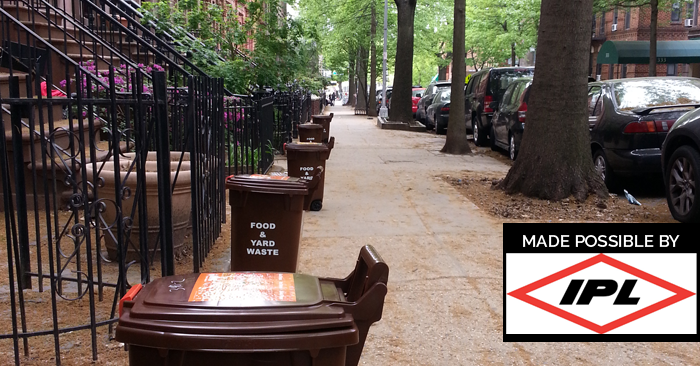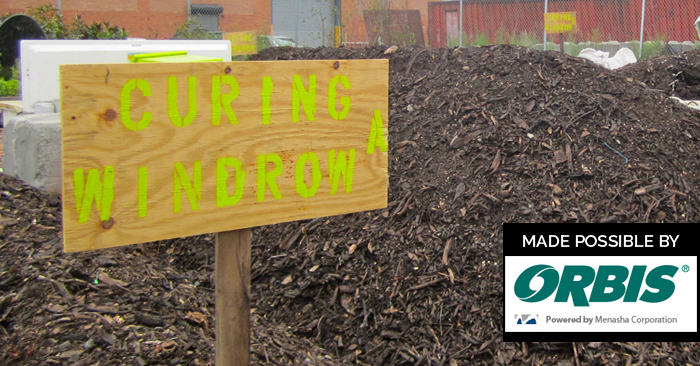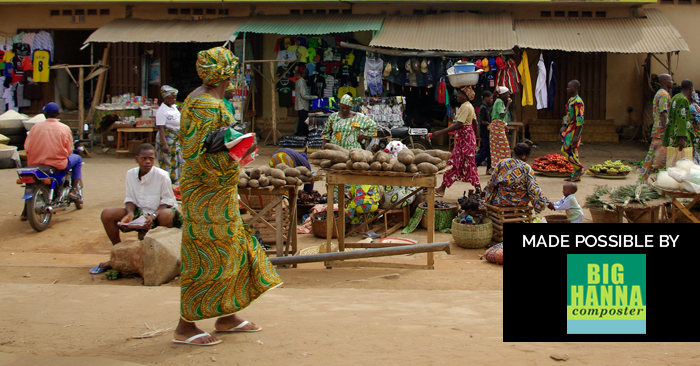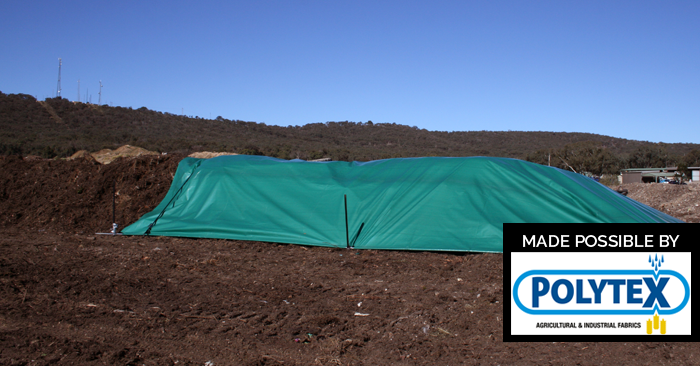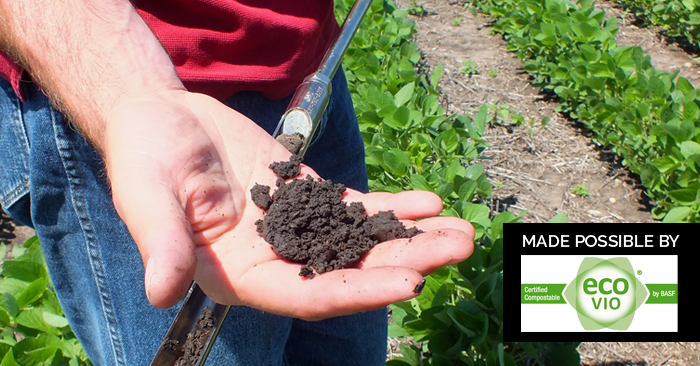Winning Hearts And Minds: Outreach Strategies for Curbside Organics Collection: NYC Case Study
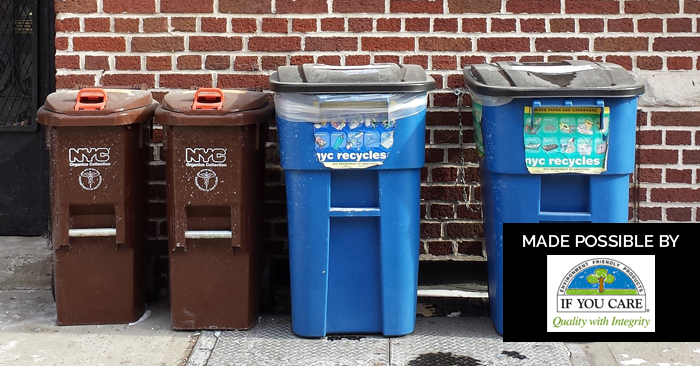
This episode corresponds to Lesson 3 and Lesson 4 of our online course.
We join Director of Recycling Bridget Anderson to discuss the DSNY’s extensive outreach and education strategy for their curbside organics collection pilot program in New York City. We explore how they dealt with the different demographics in the city, how they used online social media and traditional media, the importance of face-to-face communication, the reasons why people don’t participate, and much more.
Thanks to If You Care for making this episode possible.
If You Care Certified Compostable Bags are made from potato starch from starch potatoes, blended with a fully compostable polymer, and are polyethylene and plasticizer free. Their potatoes are grown for starch only unlike corn which is grown for food. Their potatoes require forty percent less land than corn and no irrigation. For more, visit their website.
Picture courtesy of DSNY.
TRANSCRIPT
Breaking down the OUTREACH STRATEGY
Q: You touched on some of your strategies in the last episode, but I’d like to really understand the whole process. Can you tell me how the DSNY went about planning and implementing these strategies?
BA: Entering into a pilot program for New York City is a big challenge, because you have so many different types of communities and people with so many different experiences living in different types of housing structures. So we really approached this pilot from the perspective of what’s been successful in other cities? Most other cities have lower housing density – in New York City sixty percent of our population live in high-rise apartment buildings.
So we started focusing on the lower density areas of the city. In those low density areas, we reached out to the elected officials and the local community organisations to get feedback. Part of the strategy was to look within at sanitation and our sanitation workers know best what is happening on the ground – what neighbourhoods tend to be good recyclers already, and what neighbourhoods they think would be more amenable to doing a pilot program. Based on that, we chose a few committees; we reached out to elected officials; we talked to the local community organisations; and we tried to identify those “informal mayors” of neighbourhoods that might have their finger on the pulse of the community, to get feedback on if they think it would be successful in that neighbourhood and where the challenges might be.
Based on all of this information, we finalised our initial list of pilot areas, and then we sent a mailer to the households in the neighbourhoods about a month before the program was to start. Then we followed that up with a door-to-door door hanger that explained the program and that in a week they were to receive a brown organics bin, a kitchen container and information about the program. And then, when we do the bin deliveries – the organics bin, kitchen container and information packet – we have outreach people there during bin deliveries to talk to people on the ground; if somebody comes out and they have a question, we answer it. During those periods, we’ve encountered people who are just so excited about the program, and we’ve also encountered people who say “this really isn’t for me”. So we really try to change hearts and minds, and having people on the ground, and face-to-face communication, has been critical to getting people to even try the program.
We say that it’s a voluntary program, that you won’t get fined for not participating, but we encourage you to participate, and this is why: your going to help reduce the materials that we send to landfills that potentially could save taxpayer money, you could reduce incidences of rodents in the neighbourhood; it creates a cleaner waste stream for you, because you’re separating out the stinky stuff from the rest of your garbage. So, that on the ground, face-to-face, has been critical. It’s resource intensive, but it really has been extremely helpful to get the program off the ground in the beginning.
We also try to get articles in local newspapers – like the Daily News, New York Post, New York Times, if they’re interested – and then we have the local neighbourhood newspapers, and those have also been really helpful to explain that the scheme is coming to this neighbourhood, and that this is what it looks like, this is where you go for questions, this is our website… So they’ve been really helpful to get the message out.
Q: This strategy mirrors the strategy we lay out in Lesson 4 of our online course when we speak about outreach – that you need to let them know about the program initially around a month beforehand, and then have people going door-to-door to answer questions when the bins are delivered. And that’s exactly what you did, so it’s a very extensive campaign.
BA: Yeah, we’ve built email lists and newsletters, and any opportunity we can find the get the information to the local community, we use it.
Compost COMMUNICATION for different DEMOGRAPHICS
Q: Since there are so many different demographics in New York City, did you have different approaches that you used for the different groups of people?
BA: We had our standard approach, but in certain neighbourhoods, we had people on the ground who spoke the language. We had a Spanish speaker, a Chinese speaker, we also had a few neighbourhoods where Russian was an important language. So we had people on the ground so they’d have that specific face-to-face opportunity to speak with somebody in their own language. We also translated some of our materials – the most critical pieces of information – into multiple languages, and you can translate our website, so that’ been very useful as well.
One thing we have discovered is that, especially if you’re in an area that has a lot of retired people, we can’t rely on the web or social media as our only information portal. So, we have a hotline and utilise the city’s 311 program, and we have a lot of soft responses to the most common questions that we get. So we’re able to utilise phone calls as well as an opportunity.
Getting RESIDENTS started and using COMPOSTABLE plastic bags
Q: What were the most common questions that you got, or the most common issues that people had?
BA: We get a lot of questions like “is this mandatory, do I have to do it?” Because I think some people get the mailer and, even though it says it’s a voluntary program, they assume that because it’s a notification from the Sanitation Department, they have to participate. We encourage people by saying “it’s not mandatory, but we encourage you to try, because this is a new strategy and we’re trying to see if we can make it work in New York City”. One of the strategies that we’ve recommended to people that using certified compostable bags is one way to collect the material inside your home and get it out to the brown bin in a way that’s more similar to maybe what you used to do if you used plastic bags for garbage.
The availability of those compostable bags has been a problem. It’s taken us a while to get the bags into retail stores – there are also online outlets for the bags. The price of the bags has been a problem; some people say the bags are to expensive and they won’t use them, or that they would participate in the program if they could use the bags, but the bags are too expensive – that’s an example of something that’s been a challenge. We do say that you don’t have to use compostable bags: you can use paper bags, and you don’t even have to line your kitchen container at all if you don’t want to, it just means you have to rinse it out. And with the brown bin, you don’t have to line the bin if you have a way to rinse it out, or you can use paper bags or certified compostable bags. And this spring we’ve added that people can line their brown bin with a clear recycling bag. It’s not our preference to do this, but to encourage participation and because the compostable bags are not yet available everywhere, we are allowing people to do this to get people used to the program.
Our hope is that eventually the compostable bags will maybe become cheaper and be more available, and then we can switch out the regular plastic bags. One of the challenges with the plastic is that it doesn’t break down in the composting facility, so it adds to the contamination rate, but at this point we do think that it does encourage more participation because it’s more similar to our other recycling programs. In our recycling programs, you can use clear plastic bags, or you can put things directly in the bin, so it’s more parallel right now to those programs.
Q: So you’re thinking is that it’s more important to just get them on board and into the habit and then it’s easier to change…
BA: Right. There’s the challenge of the front end, which is participation, and then there’s the back end, which is trying to do something useful with the material. And we’re trying to balance those two things right now.
The most IMPORTANT aspects of an OUTREACH STRATEGY
Q: And in terms of strategy, would say that the face-to-face communication is the most important aspect?
BA: I don’t know if it’s the most important, but it’s a critical piece. I think getting articles in the media and generating a buzz…and we’ve been very lucky where the local television news media has picked up the program, the local neighbourhood newspapers have picked up the program; the city-wide newspapers have picked up the program and we’ve had radio shows pick up the program too. Having people hear repeatedly about the program has been absolutely critical.
Then, once an area becomes a pilot area where people are receiving the program itself, the on the ground outreach has been extremely useful. Not everybody reads the mailers: if you receive a mailing from the city, it might end up directly in your recycling bin – hopefully your recycling bin! And so, having people out there on the ground during bin deliveries to really make sure people understand the program is important. The elected officials and community boards have also often hosted meetings where people can come and ask questions.
I think what’s critical is that you try to hit every outreach opportunity that you can, because you never know who might be listening in which venue. And the bigger the program goes, the more difficult it will be, because of the more neighbourhoods we’ll have, and we’ll have to be really efficient in how we implement the process, because we won’t necessarily have an army to be in every neighbourhood all the time.
Q: And since you are planning to expand, is there anything you’re gearing up for, or planning, in terms of outreach campaigns for when the program does go city-wide?
BA: So this year, we’re working through the analysis to figure out if we are able to expand this program, and really think about it as a program that we’re going to expand city-wide – we’re working on this right now. So, we have plans to further expand in the spring to another, approximately, forty-thousand households. And this fall, we’re aggressively trying to recruit more multi-unit buildings to really understand the challenges to making this work in multi-unit buildings.
Then, next summer of 2015, we will start writing up our analysis and provide the city-wide expansion plan. In the end, when we expanded recycling, we started recycling in portions of the city and then expanded city-wide, we took a geographic strategy, where we said “now we know we’re going to go city-wide, let’s phase in each area of the city”. It is likely that that would be a useful tactic also for this type of a program once we expand it city-wide. But we haven’t yet crunched all the numbers to understand exactly how quickly it would happen and who would start first – those types of things.
The TROUBLE with high-rises
Q: Since you brought up high rises, I want to ask, what was your experience in dealing with the building owners and supers – were they on board right away, or was it hard to convince them to change?
BA: We’ve been lucky at this point because we’re recruiting buildings, and they are voluntarily saying to us that they would like to join this program. I would say one of the most interesting things to date is that it’s the co-ops and the condos – the buildings where people own their units – that tend to be much more interested in the program than the building management companies for rental buildings.
Where you have a co-op board, the co-op board president is perhaps the champion of the program, they’ve really been successful in getting buildings on board and participating, and committing to manage the program in their building. Where we have a resident of a rental building contact us, we then contact the building management company, and more often than not, the building management company says “I know this resident is interested in the program, but I don’t think I have the resources to manage it”. So we’re really working this fall to see if we can get more rental buildings on board to understand what the constraints are for a rental building as opposed to an owner building.
Residents reaction to the collection program
Q: In general now, how has the reaction been from the participants of the scheme so far, has it been mostly positive, or have there been any comments on it?
BA: It’s mixed. I would say you have the core group of residents that are really into the program; they’ve jumped on board and have given us feedback like, “I have no trash left!” and things like that. You do have, I would say, a significant set of residents who’ve chosen not to participate, and that’s the group that we’re really trying to recruit now. So we’re going back into the pilot areas and saying “you know, this really is beneficial and will make your trash management cleaner”, and things like that.
But we really have a mix. The people who participate are gung-ho about participating and enthusiastic, and then you have folks who are really choosing not to. It’s interesting when you look at the numbers; we have RFID tags attached to the brown bins, so when we go and collect, we’re able to see how many bins are placed out on each collection route and are able to get a sense of participation, which is really helpful for the pilot program. And what we’re finding is that there are some people who started in the program, and then they dropped out, or they dropped out in the winter and they came back again in the spring – and so you can see patterns there.
You also see, surprisingly, bins that had never been placed out for collection for three or four months, and then all of a sudden you see them being placed out for collection. So maybe that’s somebody who really wasn’t interested in the program and then saw their neighbours do it long enough that they said, “maybe I’ll five this a try”, or maybe they have a lot of yard waste and thought, “maybe I’ll use this for yard waste”.
So we’re trying to understand the patterns of behaviour. How do people behave with the program? Is there consistency with participation? It’s a pretty interesting analysis to understand people’s behaviour. And it’s a different thing from recycling – recycling is dry goods, so that “ick” factor doesn’t exist, whereas with organics it’s a little bit different. Yard waste is less scary than the food waste portion of course. But we have really great testimonials of people who say, “I really don’t have much garbage left, once I recycle and do the organics”.
Q: I often wonder about the people who start and drop out – what their reasons where. And it’s probably more difficult to get them back into the program again after that too.
BA: Yeah. And our feedback is that some people say “I had a free sample of compostable bags, and once those bags ran out, I tried to buy them and I couldn’t find them”, or, “they were too expensive.” So for those people, we tell them that they don’t have to use those bags, and list the other strategies we encourage them to try. There are some people then – it was a particularly tough winter last winter – and they said, “you know, I just didn’t want to do the program over the winter, but now that spring has arrived, I’m coming back.” It really is varying reasons.
Wise words of advice.
Q: And finally, do you have any advice on planning and implementing an outreach program, for those listening in who might be starting their own? Any pitfalls you want to warn against, or tips to share?
BA: If you have ideas of which communities you think you would like to start the program in, I would recommend having conversations with those local communities pretty early on. Give yourself at least a few months before the program starts to really start talking to that community, explain the “why” of the program: why are we doing this, and explaining how it would work. The more they feel a part of the development of the process, the better the response. I the very pilot area, we had a situation where certain people were told that this was going to be the pilot area before they were notified on a local level, and they felt a little bit slighted. So it was important for us, moving forward, to really get into those local communities. These are our candidate pilot areas: let’s get in there and talk to them and make sure they understand the program that’s coming. And then, when it comes, they’re not surprised. So having that up-front communication before the program starts would be an important piece.
I also think providing the tools – providing the bins and the kitchen containers – has been helpful. Giving them the tools so they didn’t have to go buy things right away was really helpful. In the initial pilot areas we had sample supplies of compostable bags so they could at least get themselves started, and that was also helpful.
END
